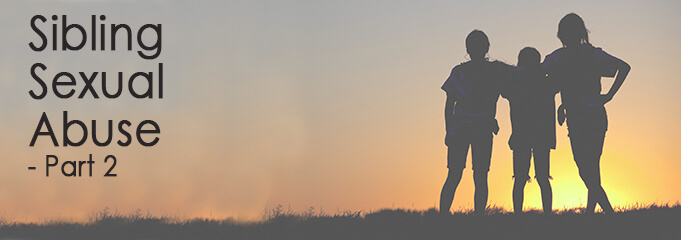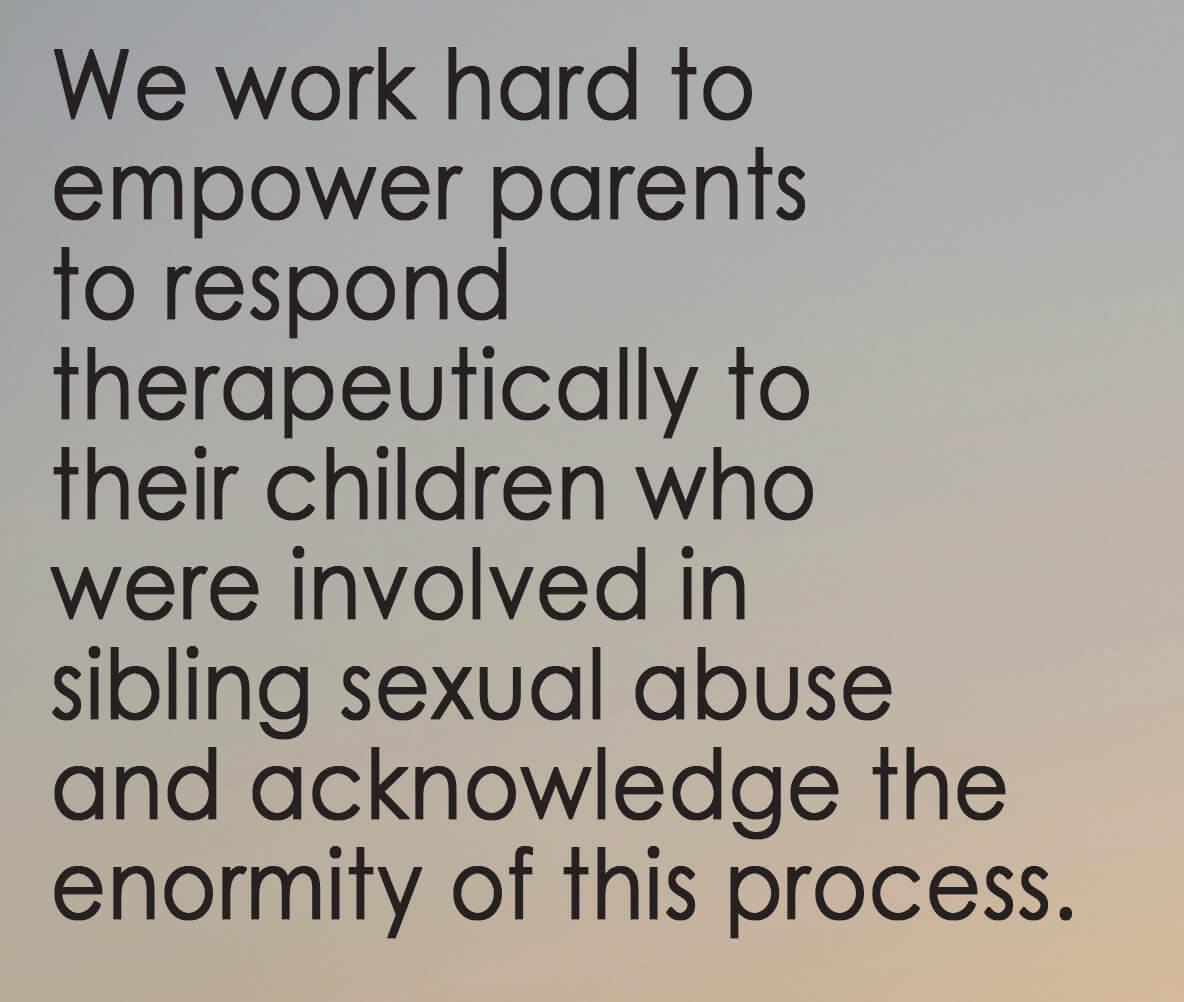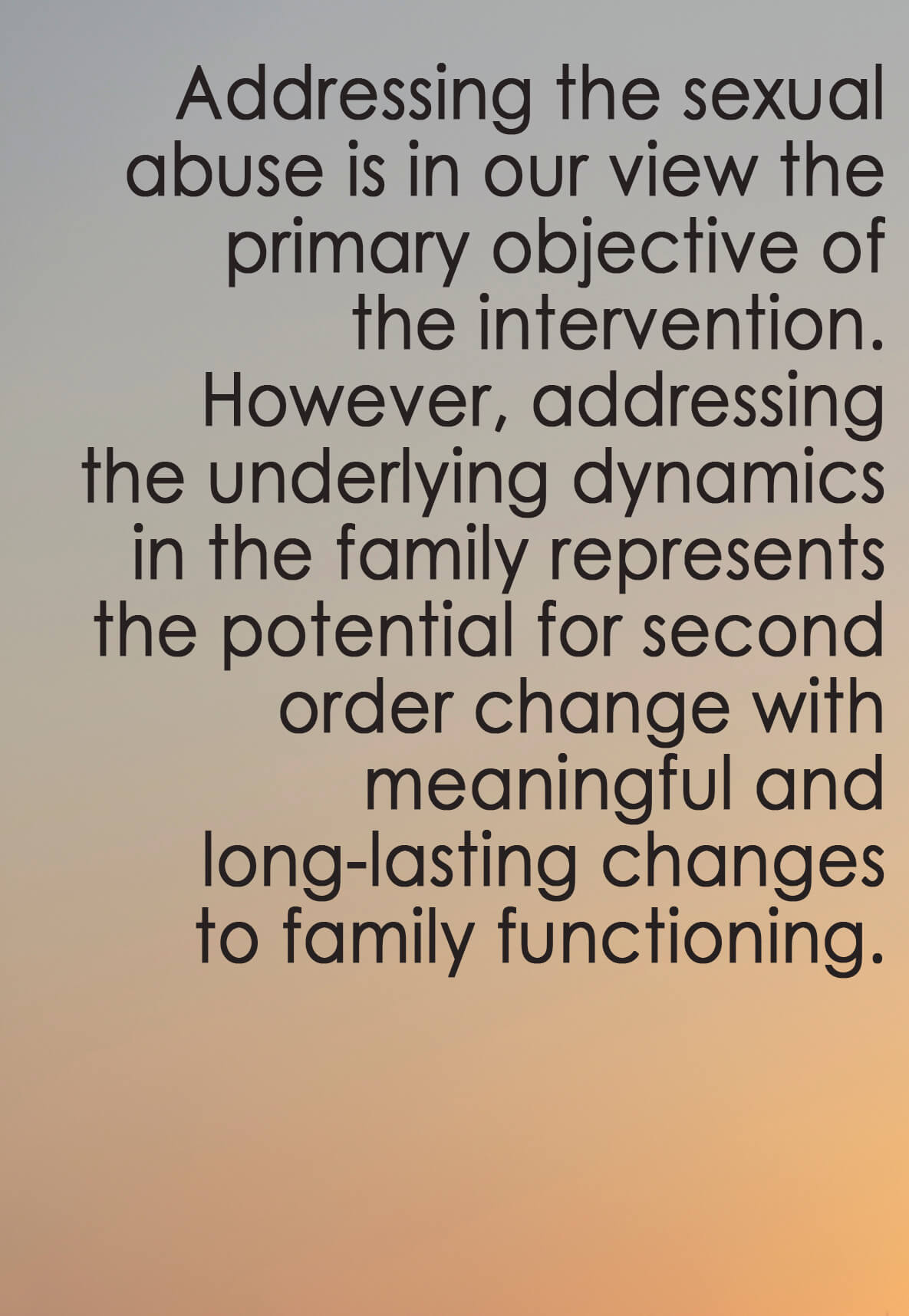
Sibling Sexual Abuse Series – Part 2
This article was authored by Jaclyn Guest, Senior Counsellor,
Child Trauma Service Victoria, at the Australian Childhood Foundation.
The proposal of a Single Clinician Approach
This is the second post in our series looking at responding to sibling sexual abuse. In our last post, Cyra Fernandes blogged about sibling sexual abuse: what it is, how to talk about it and how it impacts individuals and families. Today, we’ll share an integrated assessment and treatment model that has been trialled at Australian Childhood Foundation over the past few years. It seems to us that when abuse occurs between siblings, a specialised response is required, taking into account the complex sibling dynamic, the broader family dynamic and the unique demands on parents supporting children through their recovery and reconnection (Caffaro, 2014).
The value of a parent’s response is seen as significantly more healing for both children than a response from a therapist (Welfare, 2008, 2010). We work hard to empower parents to respond therapeutically to their children who were involved in sibling sexual abuse and acknowledge the enormity of this process.
 In carefully selected circumstances, we allocate one therapist to work with the whole family, to understand and respond to their therapeutic needs, for specific individuals and the family. The safety of all family members remains our number one priority.
In carefully selected circumstances, we allocate one therapist to work with the whole family, to understand and respond to their therapeutic needs, for specific individuals and the family. The safety of all family members remains our number one priority.
Who is this approach recommended for?
Based on our work thus far, this integrated response using a single clinician is recommended for some but not all sibling sexual abuse referrals. The first question that is asked is whether an integrated response can meet the needs of the targeted/victim child. This is more likely to be the case when siblings are living together or there is a shared goal for reunification. The parent’s capacity to meet the emotional needs of both children whilst holding the child with abusive behaviours accountable is the critical element to be assessed.
A single clinician would not be recommended when the children are living separately and there isn’t a plan for reunification. It can be the case that sexual abuse committed by one sibling against another irreparably severs relationships that had previously been problematic so that either of the children is rejected or abandoned by the parents and/or family system. If the family are in denial about the abuse or are predominately hostile, separate therapists would be recommended. This would also be the recommendation if there were immediate safety risks or other significant risks factors.
Regardless of the therapeutic approach chosen, safety planning would be the first point of contact and require ongoing conversation throughout treatment. Initially safety measures are external to the young person with the sexually abusive behaviour, such as supervising all contact with children. Ideally, as treatment progresses, parents and the young person will internalise the ability to behave safely and ensure safety. Our approach aims to improve therapeutic outcomes without compromising safety or risk of further sexual abuse.
Why?
As with other types of abuse within the immediate family, the targeted child’s feelings about their sibling who hurt them are often mixed, rather than wholly negative. From our work, it appears the abuse can also reflect a broader family dynamic that may include sibling jealousy, favouritism, persecution, lack of emotional availability and competition for emotional resources. Addressing the sexual abuse is in our view the primary objective of the intervention. However, addressing the underlying dynamics in the family represents the potential for second order change with meaningful and long-lasting changes to family functioning.
As a team, we have reflected on how best to support parents who were in the very difficult position of having to balance supporting two (or more) of their children with often competing therapeutic and emotional needs. We see parental responses as instrumental in overcoming both sexual behaviour problems and sexual abusive experiences.
A core principle of our therapeutic model when working with all children who have experienced complex relational trauma is that recovery occurs through connected relationships (ideally with their primary attachment figure). When therapeutic support is split between two or three therapists, this can make the parent’s job harder, rather than easier.
Furthermore, an integrated response (provided by a single clinician) also provides a model for parents, demonstrating that it is possible to balance the needs of both siblings and also allows a space where the parent’s own grief or reaction to the abuse can be incorporated. The family can go through a meaning-making process jointly.
Part 3 in this series will discuss a case study that demonstrates these principles and explores the risks and benefits of using a single clinician to support families in such complex situations.
